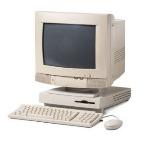RPI4 Raspbian 64 bit & LinuxCNC
- Donno
-

- Offline
- Premium Member
-

- Posts: 137
- Thank you received: 17
RPI4 Raspbian 64 bit & LinuxCNCGive this a whirl
[url=https://drive.google.com/file/d/1Ve6LismgxL0OfYufkeU1Z0hzdWhbf_WJ/view?usp=drive_link]drive.google.com/file/d/1Ve6LismgxL0OfYu.../view?usp=drive_link[/url]
Wifi is turned off only cos I've found it can affect latency, boots straight into gui. You can turn it back on by editing /boot/broadcom/config.txt as root, then just rebooting.
user:cnc
passwd:linuxcncThat image gives me bad latency
Please Log in or Create an account to join the conversation.
- Cant do this anymore bye all
-

- Offline
- Platinum Member
-

- Posts: 1200
- Thank you received: 425
It's based on the same sources as was Rod uses, the only difference is I was experimenting with a 10Hz tick rate rather than a 250Hz.
I have found my self the image I use more regulary based on RPi OS or Raspbian or whatever they call it with a 5 series kernel is better.
OK for some reason the cmdline.txt is not being setup as it should. It is supposed to isolate cores 2 & 3. Config.txt is being setup as it should.
Please Log in or Create an account to join the conversation.
- rodw
-

- Offline
- Platinum Member
-

- Posts: 11555
- Thank you received: 3877
Auto login is not enabled by default. I'm not sure if even th elinuxcnc installer does that.
I did think about it trying to enable it but I don't know how to edit settings in the middle of a file from a script.
We will leave i tto the user and we documented it here
linuxcnc.org/docs/2.9/html/getting-start...sec:_bookworm_tweaks
Using menu-config is the correct way to configure wireless. Its mentioned in my repository read.me
github.com/rodw-au/rpi-img-builder-lcnc
To set a static IP address, please follow the method in the hm2_eth docs
linuxcnc.org/docs/2.9/html/man/man9/hm2_...h%20static%20address
I have had a couple of technical issues here due to a corrupt file. I've recompiled and am rebuilding now
There is one thing I don't yet understand in the build procees which is how to skip the confusing menuconfig screen. If you have played with kernels before you will know what to do
Comments saying you are getting bad latency is not helpful, please share a screen dump after a few minutes running
latency-histogram --nobase --sbins 1000For screenshots, I have been using flameshot (sudo apt install flameshot)
Cheers guys, its great to see a few giving it a go. It is very time consuming building and testing...
Please Log in or Create an account to join the conversation.
- Cant do this anymore bye all
-

- Offline
- Platinum Member
-

- Posts: 1200
- Thank you received: 425
Cornholio: That seems better in terms of general responsiveness.
dtoverlay=disable-wifi was already commented out in config.txt so WiFi was enabled but it ignored wpa_supplicant.conf and I had to setup the WiFi from menu-config.
It didn't auto-login as cnc but setting autologin-user=cnc in the "[Seat:*]" section of the /etc/lightdm/lightdm.conf does the trick.
There's still no raspi-config installed or available in the repos but maybe that's a generic bookworm change.
There's no dhcpcd installed so setting a static IP for the ethernet port (used for talking to my 7i76E in my use case) involves more Linux hackery than a Google search for setting a static IP on a Pi would suggest. A simple old school edit of /etc/network/interfaces sorts it.
When the screen is woken from screensaver, it asks for the cnc users password.
On the Good News front, running up linuxcnc worked and I could jog my steppers (I'm testing on my Lathe project which is currently just a pile of electronics and wires on the bench).
Is this feedback useful? I'm assuming the aim is to produce a RPi bookworm image that works for most folk.
Thanks for the feedback.
The screen saver thing is easily fixed in power settings (I can look into changing that without having to boot the image). For your Mesa card you have to give it a manual config, as the interface can't connect to a DHCP server(there should only be the motion card and computer directly connected). I thought network manager was installed for configuring the Network (It is set to install via the build config). I'll check that for sure. The setup should disable wifi & bluetooth during the build process.
I've never been a fan of auto login for Linux.
Raspberry config is a Rasp OS thing, this is based on Debian, apart from the kernel sources which are pulled from the RPi github page (the standard kernel has patches one of which is to work with the overlays), RT patches are from kernel.org. One thing that does annoy we, which I should fix, is that sudo doesn't require a user password. You might as well be running as root.
Please Log in or Create an account to join the conversation.
- Cant do this anymore bye all
-

- Offline
- Platinum Member
-

- Posts: 1200
- Thank you received: 425
The former is what the debian setup program uses the (included lightdm greeter and other stuffs) latter is for installing if you want a second desktop..ie: you already have Mate or something like that.
Please Log in or Create an account to join the conversation.
- rodw
-

- Offline
- Platinum Member
-

- Posts: 11555
- Thank you received: 3877
Is that the governor? you can set that on the pi with menu-config. If not, where is it, we might be able to twaek the installer.How bad was it ? Compared to what ?
It's based on the same sources as was Rod uses, the only difference is I was experimenting with a 10Hz tick rate rather than a 250Hz.
I have found my self the image I use more regulary based on RPi OS or Raspbian or whatever they call it with a 5 series kernel is better.
Also this next build I'm about to test is going to copy the deb files to the user's home directory. That will let you experiment with what we are building with the Debian default ARM RT kernel etc.
Please Log in or Create an account to join the conversation.
- rodw
-

- Offline
- Platinum Member
-

- Posts: 11555
- Thank you received: 3877
I've mentioned before, this can be fixed by deleting the file in /etc/sudoers.d that contains the users name. We have tried to remove it in userscripst but it did not work but you can do it on the pi.
One thing that does annoy we, which I should fix, is that sudo doesn't require a user password. You might as well be running as root.
Please Log in or Create an account to join the conversation.
- Cant do this anymore bye all
-

- Offline
- Platinum Member
-

- Posts: 1200
- Thank you received: 425
I spent a lot of time finding this out, and looking for a fix. Apart from the Raspbian patched kernel there isn’t much that can be done.
Please Log in or Create an account to join the conversation.
- ruffle
- Offline
- Junior Member
-

- Posts: 26
- Thank you received: 5
Network Manager is indeed installed and works fine.
Power Settings do allow passwordless screensaver.
Personally I'm not that concerned about sudo passwords etc as for our use case it's a dedicated machine making chips but one can just change sudoers either way.
Next fun thing then is booting from SSD. I've dd'd the SDCard to my USB SSD (which was previously booting Raspian Bullseye so I know the RPi firmware is USB boot enabled) but when booting it gets stuck in a firmware not found loop.
The contents of the boot partition are quite different to a stock Raspbian so I guess I need to start Googling... unless someone's got a bright idea.
Please Log in or Create an account to join the conversation.
- Cant do this anymore bye all
-

- Offline
- Platinum Member
-

- Posts: 1200
- Thank you received: 425
Enabled the rainbow at turn on
Enabled sudo user password (stop you doing stupid things with root privileges)
Turned on wifi adapter
Diabled BT adapter
Turned on SPI
Set GPUMEM to 128M
Added isolcpus=2,3 and max.processor.cstate=1 to kernel cmdline(for latency issues)
Changed MC colour to default, similar to the old Norton DOS file manager (after 20 0dd years with Linux I still use it, great for transferring files from one computer to another as along as ssh server is running on the one you want to connect to).
Yeah the files are under /boot/broadcom (have to check where they usually are)
Added a launcher for Geany to bottom panel
Confirmed Network Manager can be used to connect and edit networks
It's now 00:20 in Australia, still need to dd the image from the sd card, compress the image and upload...I'll post in about 8-9 hours when done.
If anyone read this before then leave a comment and I'll see what I can do.
Please Log in or Create an account to join the conversation.
